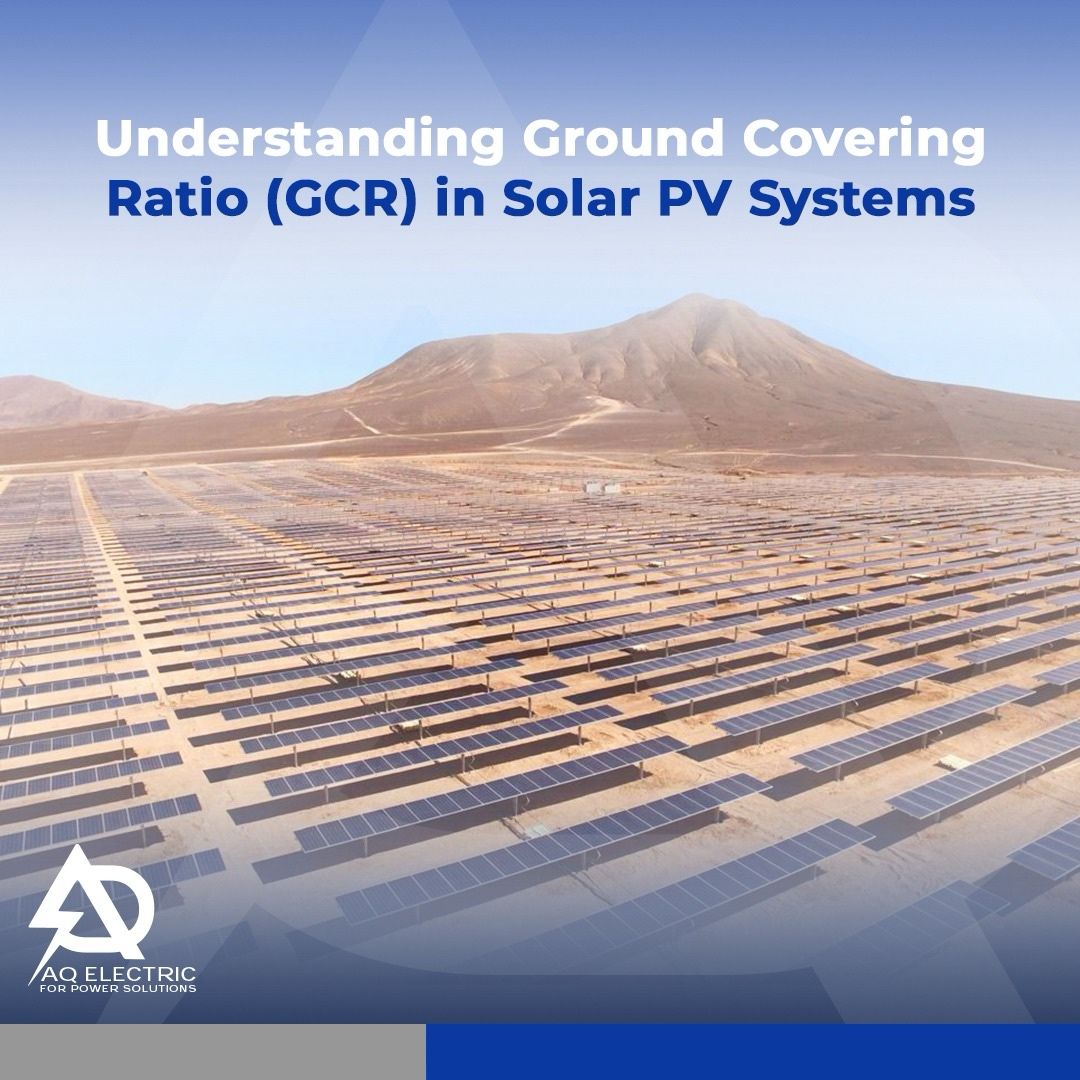Ground Coverage Ratio (GCR) is a key parameter for optimizing solar photovoltaic (PV) systems. It represents the proportion of ground area covered by PV modules in an array and is calculated by dividing the collector length perpendicular to the row length (L) by the row pitch (R).
GCR = 1: Complete ground coverage with no horizontal gaps between modules.
GCR = 0: Minimal ground coverage with infinite spacing between rows.
Impact on Shading and Energy Yield
GCR plays a significant role in shading losses and energy production, particularly in fixed-tilt configurations:
1- Higher GCR:
Increases shading between rows, reducing sunlight reaching the modules and lowering energy output.
2- Lower GCR:
Reduces shading losses but may introduce other inefficiencies, such as cosine losses, depending on system design and environmental conditions.
Optimizing GCR
The ideal GCR depends on the system’s configuration, geographic location, and environmental factors:
1- Fixed-tilt systems: Balance shading losses with tilt angle and latitude.
2- High solar elevation regions: Lower GCR helps minimize shading.
3- Low solar elevation regions: Higher GCR may be more effective.
4- Module type: Bifacial modules can benefit from higher GCR due to their ability to capture ground-reflected light.
Practical Considerations
In real-world applications, GCR optimization must account for:
1- Terrain and installation constraints.
2- Maintenance requirements and ground clearance variations.
3- Environmental obstructions affecting effective GCR.
Balancing theoretical optimization with practical feasibility is essential to achieve the best performance for a given PV installation.
For more information and requests you can reach us,,
– Email: Aqatawneh@aqelectric.net
– Mobile: +201151006630
+962795154126

